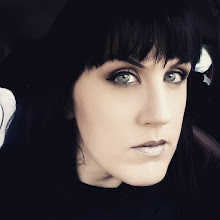I've long been fascinated by the so-called "ghost sign", those advertisements making pronouncements for products or places long since lost to the vagaries of time and fashion. The services they advertise no longer exist but through a bizarre quirk of preservation, the signs remain. There are an abundance of them in London, often high up on gable ends, out of the way but not out of mind, while they can be found across America, France, and even further afield.
This particular sign from Dunfermline, Scotland, advertises Angus Campbell Ltd, 'for all motor cycles, scooters & three wheelers', on the side of a building now occupied by a secondhand store of some description. The shop frontage has clearly changed with the times, with new signs being added when the business changed hands, but the original proprietor remains present, seemingly haunting the property through the perpetuation of his name, painted on the gable end. The lettering recalls the typographic choices of the 1930s, and while the scooter and the three wheeler are vehicular choices of the 1950s and 1970s, it's difficult to really 'date' the sign properly. What strikes me is that the name has not been painted over, or covered with something else.

I found this one in Newcastle, inside the Baltic 39 studios on High Bridge. A quick search on Google reveals that T. A. Hall & Sons Ltd used to occupy the Grade II listed building at 31-39 High Bridge, until the former printing warehouse was converted into a public gallery and studio space, operated by the BALTIC Centre for Contemporary Art. The interior of the building might be swathed in Baltic's black and concrete staircases, but the walls remain the white tiles of the warehouse, with this sign the final testament to the building's former use. Strictly speaking, the term 'ghost sign' refers to adverts that had been painted directly onto the brickwork of a building, but I think this sign should be included in such a category, being as it is painted directly onto the tiles, and advertising the presence of a company who is no longer there.
I think my real fascination with ghost signs lies in their tangibility, their recording of something that no longer exists. Just as photographs or movies can capture the likenesses of people, preserving them for posterity, so the ghost sign reminds of us products or stores that more than likely existed before the days of Google and Yell.com, when a visible advert in a prominent place, such as the front or side of a building, was the best way to alert passersby to your presence, or products. The introduction of the billboard in the 1950s rendered such signs obsolete, yet they still exist - the switch from brick to glass or concrete as construction material of choice surely added to their demise, too.
Considering the ease with which a digital footprint can be erased, or at least misdirected, the continuing presence of these ghost signs is both comforting, and disquieting. They bring ghosts among us, a quiet testament to days gone by, reminding us perhaps of simpler times, while intruding upon a visual culture that has no place for hand-painted adverts on brick. They're particularly poignant in the paradox of their existence - the point of an advert is to tell us about something, but when that 'something' no longer exists, what use do we have of the advert? In addition, some of the signs now appear divorced from their context, as the world changes around them. Without their purpose, is their meaning now obscured, or do they retain a purpose, albeit a new one?
Often advertising mundane products, or homegrown businesses, the ghost sign is a monument to those who have gone before, and a fascinating glimpse into a world that all the websites in existence can never truly recreate.










